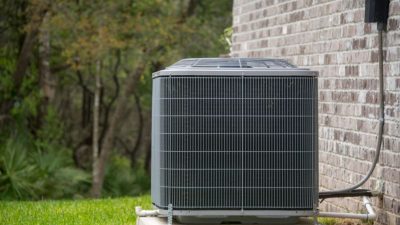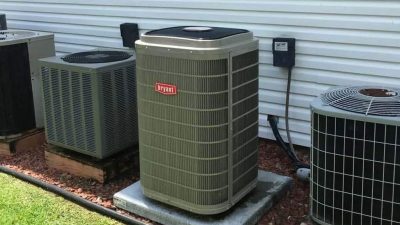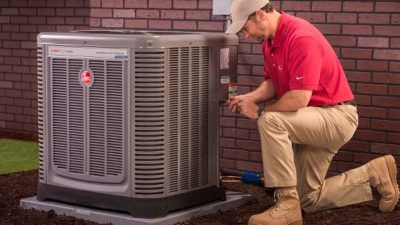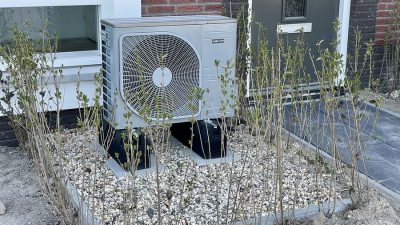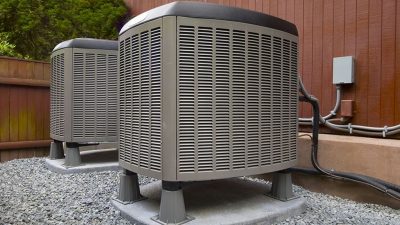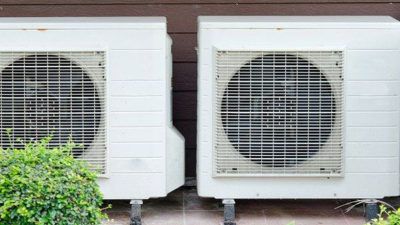Are you considering installing a heat pump in your home? Have you been wondering where to put it? If so, this article is perfect for you! We’ll discuss the location of your heat pump and what places should be avoided. Heat pumps are an efficient way to heat and cool your home, but their placement can make all the difference. Read on to learn where not to put a heat pump!
Heat pumps are a great way to make sure that your home is comfortable all year round. They help you save money on energy bills, as well as create a more comfortable environment for yourself and your family. But if not placed in the right spot, they can become less efficient or even cause damage to your home. It’s important to know where not to put a heat pump before committing to its installation.
We’re here to give you the information about where not to place a heat pump. With these tips, you’ll be able to install yours with confidence and ensure that it’s working at its best – giving you maximum energy savings and comfort in your home!
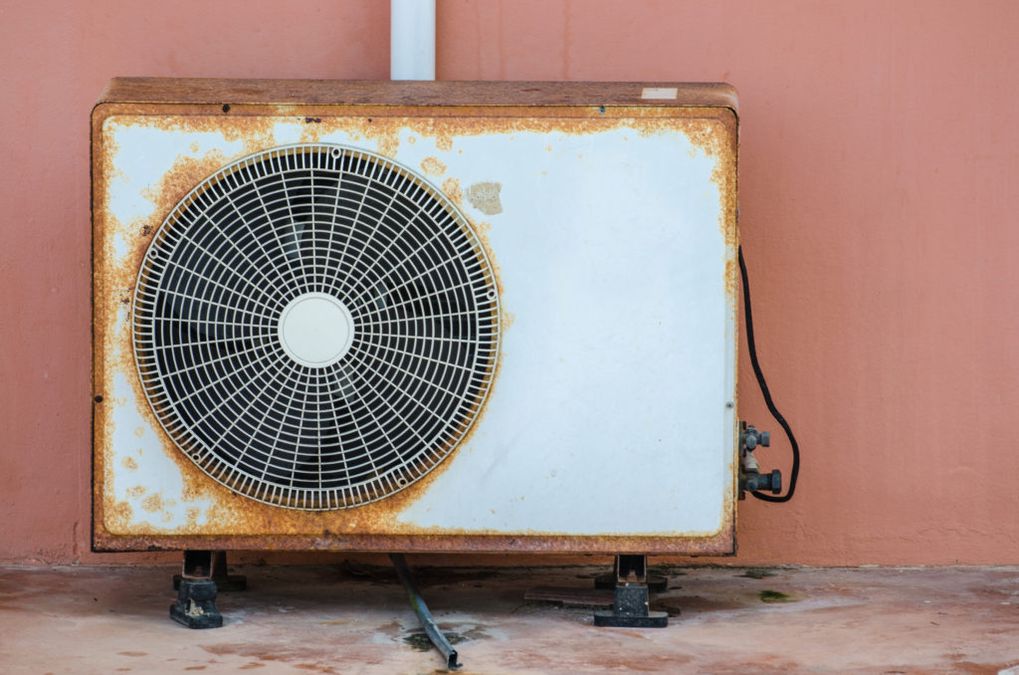
Where Should You Not Put A Heat Pump
Heat pumps can be a great heating and cooling option for many homes, but there are some locations where they may not be the best choice. Here are some places where you should not put a heat pump:
- In extremely cold climates: Heat pumps work by transferring heat from one location to another. In very cold climates, the air temperature may be too low for the heat pump to extract enough heat to effectively warm the home. In such cases, a backup heating system may be necessary.
- In small or poorly insulated homes: Heat pumps work most efficiently when they are installed in well-insulated homes with a consistent temperature. If the home is poorly insulated or drafty, the heat pump may have to work harder to maintain a consistent temperature, reducing its efficiency.
- In areas with frequent power outages: Heat pumps require electricity to operate, so if you live in an area that experiences frequent power outages, a heat pump may not be the best choice. If the power goes out, the heat pump will not be able to heat or cool your home.
- In homes with limited space: Heat pumps require outdoor units to extract heat from the air, which can take up a significant amount of space. If your home has limited outdoor space, a heat pump may not be the best option.
- In homes with high heating or cooling loads: Heat pumps work most efficiently when they are sized appropriately for the home’s heating and cooling needs. If the home has high heating or cooling loads, a heat pump may not be able to provide enough heat or cooling to maintain a comfortable temperature.
It’s important to consult with a professional HVAC contractor to determine whether a heat pump is the best choice for your home, and where it should be installed for maximum efficiency and effectiveness.
Understanding Heat Pumps
Heat pumps are an efficient and cost-effective way to heat and cool your home. But before you install a heat pump, there are some things you need to know about heat pump basics. It’s important to understand the different types of heat pumps available and the associated costs for installation.
When it comes to efficient heating, a heat pump is hard to beat. They use energy from the air or ground to move warmth from one place to another. Heat pumps can be used in both cold and hot climates, so they’re a great option no matter where you live. As far as costs go, the initial investment may be higher than that of other heating systems, but the long-term savings make up for it. Additionally, some states offer tax credits for installing energy-efficient systems like heat pumps.
Before you install a heat pump in your home, be sure to do your research and find out which type is best suited for your climate and budget. Make sure to also figure out what kind of installation process you’ll need based on the type of system you choose—because improper installation can lead to costly repairs down the line. Doing your due diligence early on will help ensure that your new system runs reliably and efficiently for years to come!
Safety Considerations
Now that we understand the basics of heat pumps, it’s important to consider safety considerations when planning and installing a heat pump. To ensure safety, there are certain precautions we should take and certain places where a heat pump should not be placed. Here are four key considerations:
- Heat pumps should never be installed indoors in an enclosed area without proper ventilation, as this can lead to dangerous levels of carbon monoxide in the air.
- Outdoor placement is also important; do not install a heat pump near combustible materials or open flames, and make sure it is away from areas with high levels of dust and debris.
- Electrical connections should also be given special consideration; always hire a licensed electrician to ensure connections are properly made and all necessary safety measures taken.
- Finally, make sure that you follow all local building codes regarding placement of your heat pump for optimal safety and performance.
With these considerations in mind, you can ensure that your new heat pump will operate safely and effectively for years to come!
Unsuitable Locations
When deciding where to install a heat pump, there are certain locations that should be avoided. Installing a heat pump in the basement is not recommended for several reasons. Basements are usually darker and more humid than other parts of the house, making them less ideal for a heat pump. Additionally, basements can have poor air circulation and ventilation due to their location in the home.
Installing a heat pump outdoors can also be problematic. The outdoor environment can be unpredictable and hazardous, so it’s important to make sure your system is protected from extreme temperatures and weather conditions. Heat pumps placed too close to bodies of water should also be avoided. Moisture and humidity can easily damage components of the system if they become too saturated. Similarly, installing near gas or propane tanks could cause potential safety hazards as well.
Heat pumps are best installed in dry areas with good air circulation such as attics or closets on an upper floor of your home. It’s important to make sure you select an appropriate location that will provide years of reliable use without any issues or safety concerns.
Potential Dangers Of Placement
When considering heat pump placement, it’s important to remember that improper or hazardous placements can lead to dangerous conditions. Heat pumps must be installed away from unsuitable areas, such as vents and exhausts, which can cause the system to overheat and malfunction. Additionally, they should not be placed in areas with poor ventilation, as this could also cause the pump to overheat and become damaged.
It’s also important to ensure that the heat pump is placed well away from any combustible materials. If the pump is too close to these materials, it could ignite a fire or increase the risk of an electric shock. Therefore, it’s essential to keep these safety considerations in mind when choosing a location for a heat pump installation.
Heat pumps are powerful systems that require a safe and suitable placement in order for them to operate correctly. Taking into account potential dangers associated with improper placement will help ensure that your heat pump remains safe and efficient for years of use.
Installation Requirements
Installing a heat pump is a complex process that requires careful consideration of the correct placement and site conditions. The right installation can save you money in the long run, so it’s important to plan ahead.
| Heat Pump Installation | System Sizing |
|---|---|
| Correct Placement | Correct Size |
| Site Conditions | Appropriate Loads |
| Installation Costs | Design Considerations |
When determining the best place for a heat pump, consider both indoor and outdoor factors. The area should have enough space for the unit, as well as be free from obstructions that could affect airflow. Additionally, consider what type of climate your area experiences – will there be extreme temperatures or high winds? This will help you choose a unit that is specifically designed to handle these conditions.
Heat pumps also need to be correctly sized for the space they are being installed in. If the unit is too large, it may cycle too frequently and use more energy than necessary. On the other hand, if it’s too small, it won’t meet your needs and may end up costing you more in repair costs down the line. Additionally, other design considerations should be taken into account such as window placement, insulation levels, and ceiling height. All of this information should be considered when choosing an appropriately sized heat pump system.
By taking all of these factors into account before installing a heat pump, you can ensure that you get one that is tailored to your specific needs and environment. With careful planning and research, you can save time and money on your next heat pump installation!
Maintenance Guidelines
Heat pumps are an efficient and cost-effective way to heat and cool your home, but they require regular maintenance in order to operate at their best. To ensure that your heat pump is running smoothly and efficiently, it’s important to follow these care guidelines.
First off, you should schedule routine servicing with a qualified service technician. This can be done once or twice a year, depending on the type of heat pump you have. During these visits, the technician will check for any blockages or other issues that may be affecting its performance. They will also inspect the air filter and change it out if necessary.
You should also pay attention to the system’s noise level and make sure it isn’t producing any strange noises or vibrations. If this happens, it could be a sign of a problem and you should contact your technician as soon as possible. In addition, you should check all exterior components such as ducts, piping, wiring and other parts for signs of damage or wear-and-tear. Lastly, if there is no snow in your area during winter months, you should cover the outdoor unit with a tarp or blanket in order to protect it from debris and excessive dust accumulation.
By following these simple heat pump upkeep steps you can ensure that your system is running properly and efficiently while avoiding costly repairs in the future.
Conclusion
In conclusion, it is important to understand the basics of heat pumps and their safety considerations before attempting to install one. It is also essential to be aware of any unsuitable locations for a heat pump, as there are potential dangers involved in incorrect placement. Before deciding on an installation location, it is necessary to ensure that all requirements for the heat pump are met. Lastly, once the heat pump has been installed, regular maintenance should be undertaken to ensure that it runs safely and efficiently. By taking these steps, we can ensure that our heat pumps run smoothly and safely all year round.
I hope this article has provided you with a better understanding of where not to place a heat pump. No matter where you decide to put your heat pump, always make sure that you follow the correct guidelines and take the necessary safety precautions during installation and maintenance. My advice is to always consult with experts who have experience in installing and maintaining these systems before making any decisions. With this knowledge, you can rest assured that your heat pump will be properly installed and maintained so that it will last for many years without issue or risk of harm.

